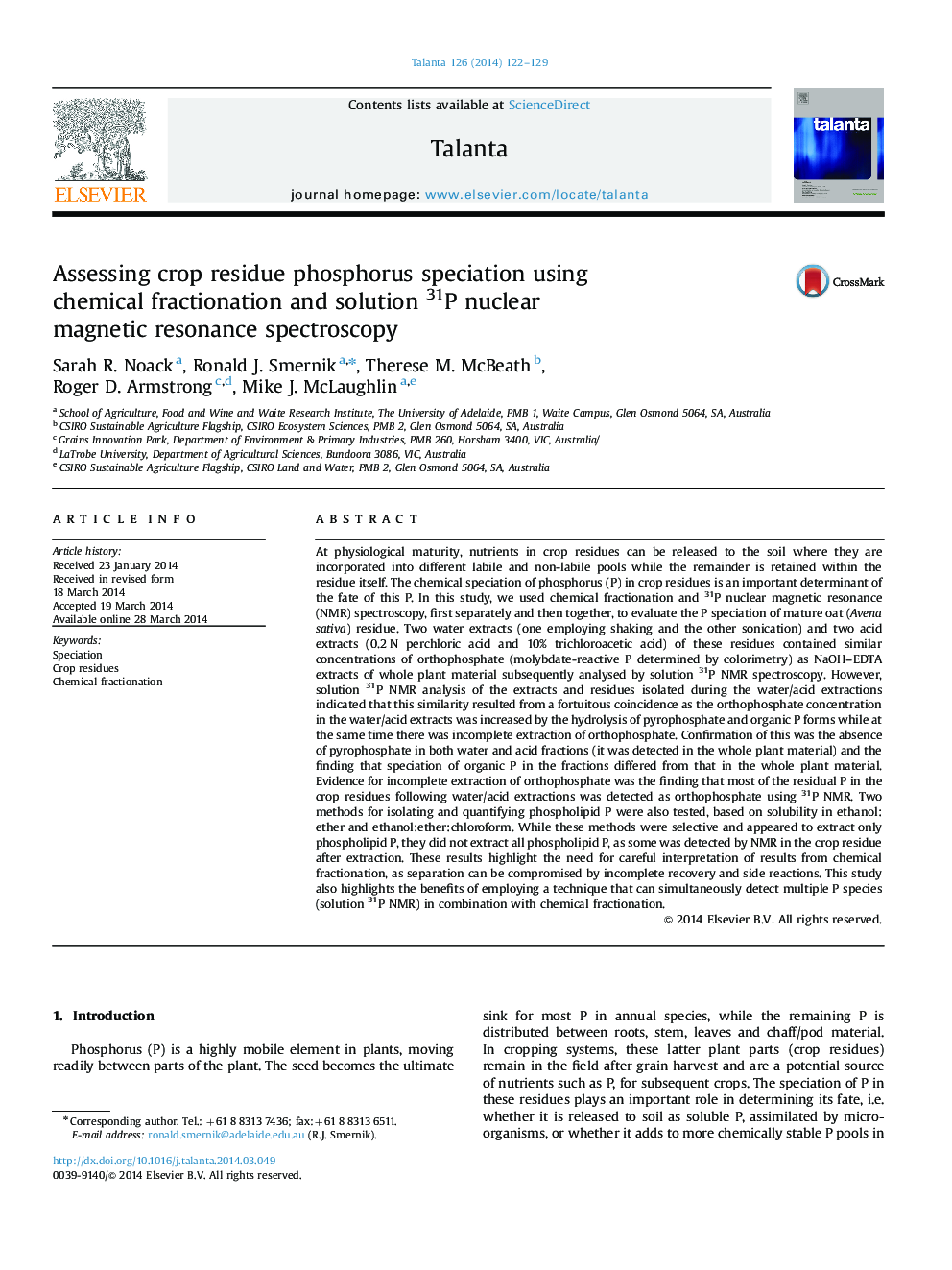| کد مقاله | کد نشریه | سال انتشار | مقاله انگلیسی | نسخه تمام متن |
|---|---|---|---|---|
| 1242281 | 1495809 | 2014 | 8 صفحه PDF | دانلود رایگان |

• A combined approach for identification of P species in crop residues.
• Chemical fractionation techniques only partially extracted the intended P species.
• Extractants selected caused conversion of P species during extraction.
• Not all extractants were selective for only the intended P species.
At physiological maturity, nutrients in crop residues can be released to the soil where they are incorporated into different labile and non-labile pools while the remainder is retained within the residue itself. The chemical speciation of phosphorus (P) in crop residues is an important determinant of the fate of this P. In this study, we used chemical fractionation and 31P nuclear magnetic resonance (NMR) spectroscopy, first separately and then together, to evaluate the P speciation of mature oat (Avena sativa) residue. Two water extracts (one employing shaking and the other sonication) and two acid extracts (0.2 N perchloric acid and 10% trichloroacetic acid) of these residues contained similar concentrations of orthophosphate (molybdate-reactive P determined by colorimetry) as NaOH–EDTA extracts of whole plant material subsequently analysed by solution 31P NMR spectroscopy. However, solution 31P NMR analysis of the extracts and residues isolated during the water/acid extractions indicated that this similarity resulted from a fortuitous coincidence as the orthophosphate concentration in the water/acid extracts was increased by the hydrolysis of pyrophosphate and organic P forms while at the same time there was incomplete extraction of orthophosphate. Confirmation of this was the absence of pyrophosphate in both water and acid fractions (it was detected in the whole plant material) and the finding that speciation of organic P in the fractions differed from that in the whole plant material. Evidence for incomplete extraction of orthophosphate was the finding that most of the residual P in the crop residues following water/acid extractions was detected as orthophosphate using 31P NMR. Two methods for isolating and quantifying phospholipid P were also tested, based on solubility in ethanol:ether and ethanol:ether:chloroform. While these methods were selective and appeared to extract only phospholipid P, they did not extract all phospholipid P, as some was detected by NMR in the crop residue after extraction. These results highlight the need for careful interpretation of results from chemical fractionation, as separation can be compromised by incomplete recovery and side reactions. This study also highlights the benefits of employing a technique that can simultaneously detect multiple P species (solution 31P NMR) in combination with chemical fractionation.
Figure optionsDownload as PowerPoint slide
Journal: Talanta - Volume 126, 1 August 2014, Pages 122–129